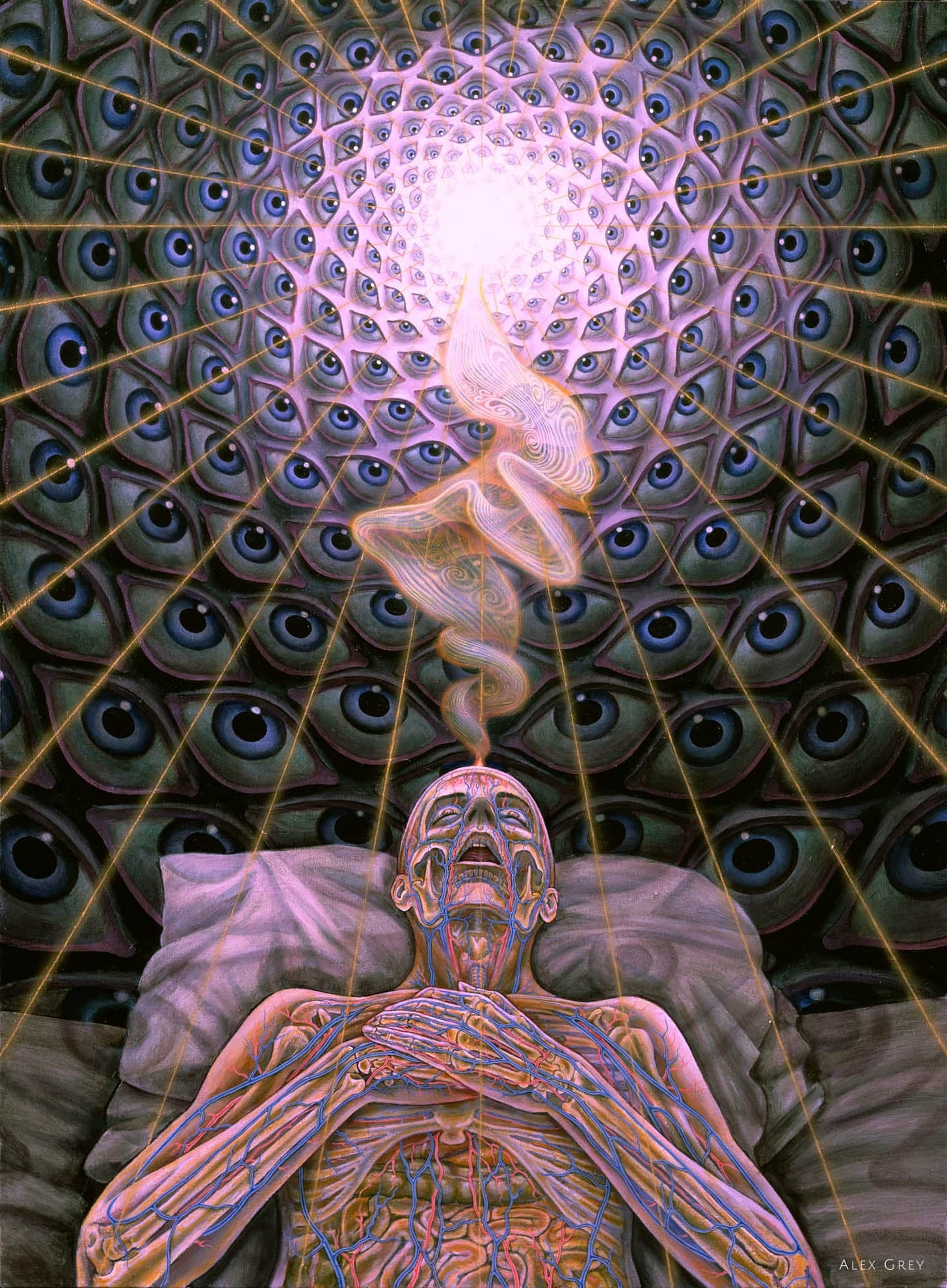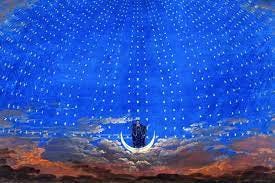Social Justice as a Gnostic Cult (?)
I follow James Lindsay deep into a very long and winding rabbit hole...
Exploring social justice ideology as a modern permutation of a very ancient and secretive religious tradition
I've recently gone head-first down a rabbit hole of philosophy, reading Marx and Rubin and some of the early critical theorists and listening to James Lindsay's New Discourses series, in which he lays out a well-developed and fascinating hypothesis: Hegel's dialectic, Marxism, Critical Theory, and the modern offshoots of social justice are all associated worldviews which follow the tradition of a very old religious impulse. They are modern incarnations of Gnosticism.
Lindsay doesn’t give much in the way of historical background or religious reference in his lectures (at least that I’ve heard). Fortunately I’ve been fascinated by Gnostic Christianity since at least high school. The Gnostics really experienced a heyday at the height of the Roman empire. The vast and cosmopolitan civilization linked a thousand discrete religious and philosophical traditions and for the first time Essene mystics and Cretan bull venerators and the initiates of the Eleusinian mystery cult and the remnants of the great Zoroastrian priesthood of Eastern Persia were all in possible dialogue with one another.
Every developed religious tradition (that is: large enough to encompass many communities; old enough for many interpretations and debates to have arisen; and occurring in a post-agricultural, state-level society with writing and roads and an urban life) has included an element with hermetic tendencies, probably. Like mystical or fundamentalist or ecumenical impulses, hermetic ideas seem deeply rooted in human psychology. We are animals who exist in the material world, but we are capable of abstract thought and symbolic representation and manipulation. Hermeticism (the gnostic impulse) is simply the development of the idea that there is a greater truth behind the symbols that can only be accessed through esoteric learning. It is the elevation of symbology over material reality.
The Gnostics therefore have strains of their belief in every world religion. Here I will focus on Gnostic Christianity, since it is probably the most well documented and has had more of an effect on Western philosophy than the other varieties. It was basically annihilated as a living religious force by the time of the Nicene Council, but it was probably never going to attract the mass appeal and emotional resonance of Augustinian Christianity. Hermeticism, then and now, is a tendency that is dominated by intellectuals and scholars. It is no accident that the great hermetic project in Europe for hundreds of years was alchemy, the manipulation of material reality using secret knowledge and the hidden truth of the essential similarity of all things behind the distorting veil of reality. In our society, of course, hermeticism isn’t a powerful force in chemistry, having been exorcised by scientific materialism. It is rather a controlling force in sociology and Critical Theory and the humanities.
The Gnostic Christians believed that all being and possibility arose and arise from Sophia (‘Wisdom’), the distant arch-deity of their cosmology. In her boundless power many emanations were flung off. One was corrupted and separated from her in his nature and will. This was the Demiurge, the craftsman. The God of the Old Testament is understood by Gnostic to be the Demiurge. While his power was obviously godlike, his malice and selfishness make him more akin to a demon. He is responsible for the creation of material reality. In his power he created the world but in his corruption he created it a prison and a site of intense and varied suffering. This is Gnostic axiom #1: the material world and physical reality are false and inferior.
Many icons of Christianity are turned on their head in this cosmology. The Biblical God is really a demon. The snake in the garden was a messenger trying to liberate Adam and Eve. Jesus’ role is more complicated but he’s often seen as a kind of messenger of Sophia, given a claim on divinity not from his relation to the Biblical God (obviously) but through his dual nature: a body of material reality but also an essence of pure idea with the secret knowledge to help mortals escape our dungeon. The vitiating drive of Gnosticism is not good deeds or faith or Christian fellowship. It is the gathering and instruction of secret knowledge which will allow the soul to escape the metaphysical barriers around our world by speaking the correct words to the aeons (angelic beings) which guard them. This is Gnostic axiom #2: the path to liberation lies in learning esoteric secret knowledge.
Gnostic Christianity believed that everyone and everything is actually divine - but all material reality is hopelessly corrupted. The Divine’s desire to understand itself and experience subjectivity lead to the creation of separate aspects of itself to apprehend its own glory and power. Those aspects eventually became separated and confused. Imagine that behind every speck and boulder and every plant and car and river on Earth is a hidden, luminous, divine essence matching its most essential character perfectly without the flaws and imperfections and suffering of our world and you begin to grasp it. Now imagine the same for every animal, and pebble, and person.
Alex Grey is a successful painter who explores Gnostic themes. His central idea is that psychedelic drugs permit a visionary transcendance and allows the voyager to peer behind the curtain of reality. This is a kind of Gnosticism and it’s found everywhere in psychedelic cultures, from the Eleusinian Mysteries of ancient Greece to Aldous Huxley’s ‘Doors of Perception’.
Buddhism sees our visible world as ‘Maya’ (illusion), a veil cast over the perfection of reality (which perfection is infinitely ‘empty’). Gnostics wouldn’t phrase it quite that way but they also see the physical objects and limits of our vision as a kind of malicious trick. The great mission of Gnosticism is to spread the hidden knowledge which will allow souls to ascend through the nine layers of restriction upon death, and escape this world, and rejoin Sophia: another tiny piece of the divine reunited with its transcendent essence and therefore one small step closer to the redemption and purification of everything. This is Gnostic axiom #3: all history and all time is part of a grand metanarrative of inevitable perfection; we are all on a path to divine oneness.
THESE are not the ideas of Marxism, or Critical Theory. That should be plain. In their detail they’re also completely different from Gnostic traditions in Judaism and Islam. The characters and specific mythology vary widely. The essential and deeper idea is this: material reality isn’t the truth. The truth lies behind it and is divine. It is all one thing, ultimately, and knowing this is a key insight. Only through esoteric learning and deep symbology can one escape from the inferior domain of physicality. The redemption and perfection of everything is the endpoint of a long process of the divine coming to recognize itself and the merging of all things. THAT is the Gnostic vision and it is found in Platonic thought (remember Plato’s cave? shadows on a wall which reflect the deeper truth but also hide its existence?), and Kabbalah, AND MARXISM, AND CRITICAL THEORY (supposedly).
This is where Lindsay begins to tread on new ground. The intense opposition he’s aroused incline me to think that he’s onto something, for there’s nothing that cults enjoy less than being exposed as such. This is where he starts to collect his impressive array of enemies and detractors, for-unlike Kabbalah or Neoplatonism-Marxism and Critical Theory are still vital ideologies which wield and covet worldly power and influence. They also claim to be political and social worldviews. Most people are taken aback when they hear the claim that Marxism (for instance) is a Gnostic belief system. Isn’t Marxism concerned with the workers owning the means of production or something?
As Lindsay says: Marx was not an economist (he’s got that right!); Marx was a theologian. In his reading Marx applied the Hegelian dialectic (and Hegel was absolutely a mystical, Hermetic figure) to history. The dialectic (thesis, opposed by antithesis, whose struggle forms synthesis) is not a process of new ideas or developments, as it first appears. Instead it is a process by which the divine slowly reconciles the aspects of itself. Synthesis was always the deep essence of thesis then, and the direction of inexorable iterations moves all of reality back toward the expansive oneness of the godhead.
Marx believed that history had a direction and the direction was leading us… back to oneness, harmony, divinity. While Marx was an overt atheist and his philosophy was atheistic, he considered the alienating aspects of capitalism and only focused so heavily on economic issues because economics was important in understanding the recent historical developments of his time. Economics (wealth, occupation, status) was also important to people’s identities. Capitalism alienated people from each other and from the collective social body. According to Lindsay, Marx’s view of communism (the utopian period of history after the dictatorship of the proletariat) was the end of alienation, distinctions, and differences. All classes, jobs, and identities would be fused into a single, glorious, uniform mass. Society would abolish our variations (which were actually illusory and damaging) and realize its essential oneness.
I haven’t bought Lindsay’s interpretation of Marx completely, but I’ve just begun walking down this particular tunnel. I am much more inclined to understand Critical Theory (which is a newer variation of Marxism, as I’ve written) as a Gnostic system because of its inordinate emphasis on words and their secret power, its postmodern undercurrents that there IS no objective reality or meaning (a concept which can easily be blurred into a kind of ‘universal oneness’), and its identification of many of our cherished values (hard work, happy marriage, parenting, successful business, etc.) as actual symptoms of evil. Critical theory posits the idea that our society is so saturated with oppression and privilege and white supremacy that we’re mostly blind to it. Only with the right ideas and lexicon and attitude-the right gnosis-can one peer behind the curtain of the status quo.
This case seems strongest for Queer Theory. I’ve been reading a lot of Queer Theory recently to investigate a tenuous suspicion I have that many of the thinkers in this early and contemporary academic movement are pedophiles, or intensely sympathetic to pedophilia. It’s not the kind of thing that makes for good dinner party conversation and it tends to provoke and divide people, but the only real factor for me is whether it’s true or not. Queer Theory is obviously much more than a tiny sociological offshoot. It is hugely powerful on the American Left and many of our fiercest current debates are actually about the ideas of Queer Theory. I literally cannot imagine a different explanation for the emergence and explosion of ‘drag queen story hour’, for instance. To be clear, most people on the Left are not followers of Queer Theory. They’re rather people who base large parts of their identity on being tolerant and pro-gay and sex-positive and they often reflexively react to things that the Right opposes. I don’t think there are many regular members of the Left who can articulate any real benefit of having what are essentially fictional characters from seedy gay cabarets present picture books to small children but they see that the Right doesn’t like it and so they imagine that the opposition is homophobic… and they’re anti-anti-gay so they support drag queen story hour. I think people would be shocked at how much political belief in the US is formed using these kinds of fuzzy associational processes.
Queer Theory takes a very mystical, anti-material approach to human life and being. Each person ‘lives in ‘ or ‘exists in’ a body. People have a ‘gender identity’ which only resides in the realm of subjective thought. It is totally separate from their physical body but is actually more real and valid than their physical body. In actuality, a person is their body but if a person was their body than an adult biological male who has a strong and recurring feeling of being a woman would simply be a biological male with a feeling of being a woman. The statement that the biological male is a woman would be nonsensical and it is gaps and contradictions like this which are slowly creating a reactive backlash among ordinary folks. To most americans the bold phrase in the preceding sentence is literal insanity. The sense that people are getting that the people who most fervently believe this stuff tend to be disconnected academics or privileged students who are also often anxious and unhappy isn’t helping their cause. Humans are “assigned male (or female) at birth”, implying that the categories are simply a function of human categorization and therefore socially constructed and arbitrary. For those who believe that Queer Theory is an obscure and unimportant academic backwater keep in mind that in the past 5-10 years all mainstream journalists and most medical associations and scientific publications have adopted this ideological phrasing and many of them now perpetuate even more central and controversial ideas of Queer Theory.
Queer Theory believes that all categories of meaning that we use to describe people are products of a social process and that the process is essentially about domination of certain groups over others. This includes categories like ‘adult’ and ‘child’. The theorists say that it’s only with development of a “critical consciousness” (gnosis) that one can begin understanding the falsehoods which are modern science and law and morality. These are all structures of oppression and it’s only with their dismantling that we will live in a world in which every person is actually one, perfectly innocent and playful and sexual. The sexual minorities and stigmatized groups (“boy lovers” being a particularly sympathetic constituency to Gayle Rubin, a titanic figure in the foundation of Queer Theory) have a special role in subversion. They are the natural agents to erode heteronormativity and patriarchy by blurring boundaries, questioning norms and traditions, capturing institutions, and socializing children until they’re sympathetic to the aims and values of Queer Theory. This is all on the record in not one but many instances.
It’s not often that I read an entirely new take or gain a brand new lens through which to see broad academic or political movements. I’m not convinced that Lindsay is entirely correct but, as I said, I’m still in an early exploratory phase.
I understand that topics like the one occupying this paper are probably deeply interesting to a small number of philosophy nerds. I write and post such things anyway because (1) I am one of those nerds and (2) one can never tell when a fact or connection will grab the interest of a reader and send their thoughts into entirely new directions. For me that is the joy is writing about political beliefs and debates. It’s not that these things make people angry-it’s that these are the stories we as a society are telling ourselves which give shape to our world in a hundred different ways and decide which turns we’ll collectively take among those myriad forking roads of possibility.
Still, I think the more urgent issue for most readers is not whether Queer Theory or other critical systems are in the gnostic tradition or not but what exactly they believe and how much power they have. I can’t reassure anyone on those points. Anti-racists really do believe that (for example) whiteness is an evil mode of being that gave the world punctuality and logic and other terrible developments and Queer Theorists really do envision a utopian future in which sex between adults and children is as normal and accepted as sex between adults. It’s simply impossible to deny that these ideas are explicitly developed in these worldviews. Critical theorists of all kinds have an immense amount of cultural power at this time, also. Just look at the terminologies which were generated and developed within the theory: microaggression, assigned female at birth, cultural appropriation, tone policing, equity, systemic racism, racial trauma, etc. These are everywhere now. Some of them have valid and interesting ideas or social critiques behind them but the point is that Critical Theorists have spent 50 years insinuating themselves into university departments and creative enterprises and teacher colleges and government agencies. They referred to it as the “long march through the institutions” and an important intermediate goal was for their ideas to profuse throughout society and to become so normalized that their origins would become lost and opposition stigmatized. That has already happened.
Whether or not social justice is a gnostic cult, it is definitely a variation of Marxism ultimately concerned with the radical denuding of our cultural and political landscape. Proposals such as setting aside certain placements for black or queer candidates, discouraging “privileged” people from opining or speaking on issues, and instituting speech codes to protect listeners from ‘harm’ are all products of Critical Theory. If you want to understand what’s happening in the U.S. (and, increasingly, across the planet) right now you must understand the aims and ideas of Critical Theory.
Thanks for Reading!









In the 1980s I was very curious about Gnosticism (I’ve a tendency to dive head first into the things society on the whole condemns) and obtained the so-called Gospel of Saint Mary Magdalen. I was so disappointed in it. Gnosticism is everything I stand against.